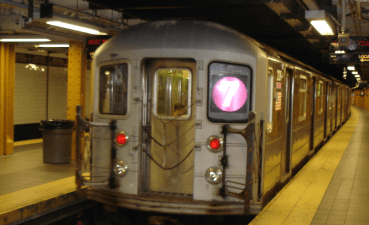Council Candidates on the Issues: Yetta Kurland, District 3
In anticipation of primary day on September 10, we continue our series on City Council candidates with a Q&A with civil rights lawyer Yetta Kurland, who’s running to represent District 3. The district covers Midtown, Hell’s Kitchen, Chelsea, and the West Village, and it’s currently represented by Council Speaker Christine Quinn. Yesterday we posted responses from District 3 candidate Corey Johnson. A third candidate, Alexander Meadows, did not respond.

Streetsblog: Protected bike lanes on 8th and 9th Avenues involved extensive planning efforts with CB 4. Does the district benefit from the bike lanes and pedestrian islands? Would you like to see similar treatments on other avenues in the district?
Yetta Kurland: Protected bike lanes and pedestrian islands are a benefit to the Lower West Side in a number of ways. Most prominently, bicycle safety, traffic calming, shortened pedestrian crossing distance and reduced particulate emissions. The most urgent need for bicycle lanes in Manhattan is currently on 5th/6th Avenues, as bicycle transit is still dangerous in the middle of the island.
SB: The City Council will soon vote on changes to the Manhattan Core parking regulations. What direction would you like to see off-street parking policy take in the future?
YK: While I firmly believe that new development should take the holistic needs of the community into account, parking is not the right need to start with. New development should include affordable housing, access to adequate school seats, community oriented retail and more. The focus on parking stymies those other goals, and is out of touch with the culture of Manhattan.
SB: Hudson River Park is slated for significant development on Pier 57, and potentially Pier 40. Do you think this will impact the West Side Greenway, a major active transportation route?
YK: Hudson River Park — including the Greenway — is a magnificent benefit to the city of New York. I will work to ensure that whatever development is necessary to maintain the park does not impinge on the sustainability of our neighborhoods — including the West Side Greenway.
SB: How can the City Council best use its powers to reduce vehicular deaths and ensure traffic justice citywide?
YK: There are a lot of strategies. Increased enforcement of speeding and other traffic laws is essential. New York City has successfully reduced most categories of violent crime. If we can apply some of those same strategies to vehicular crime, there will be many lives saved. Increased reporting of vehicular deaths and traffic calming on dangerous streets is also key. Most importantly, the city should continue to reduce our dependence on the automobile as much as possible. Attention to pedestrian safety issues in all planning decisions should be built into the urban planning process. In particular, the Lower West Side has large concentrations of seniors, and crossing times, traffic speeds and more must take that in to account.
SB: The MTA is a state agency, but what actions would you like to see the City Council take to fund and expand transit service?
YK: I believe the City Council should work with the State Legislature to ensure a permanent, dedicated revenue stream for the MTA. That can include progressive tolling and parking fee based approaches. The City Council can also direct the NYC DOT to increase available street space for dedicated select bus lanes wherever it makes sense to do so. The City Council – in particular the Finance Committee – should investigate real estate deals and consultant contracts that seem to violate the MTA’s fiduciary responsibility to New Yorkers. On Manhattan’s West Side, it’s also imperative that we work with activists and elected officials from throughout the region to facilitate the growth of commuter rail and bus services. Vehicular traffic flowing through our neighborhoods to New Jersey and elsewhere is a safety and public health risk that should be reduced as much as is possible. Finally, I believe in the power of community organizing to change policy. The work of groups like Transportation Alternatives, the Riders’ Alliance, the Straphangers Campaign, Checkpeds and others can resonate when decisions about transportation and funding priorities and street space allocation are made. Elected officials should work with advocates to channel that energy towards the policy makers who need to hear it.
